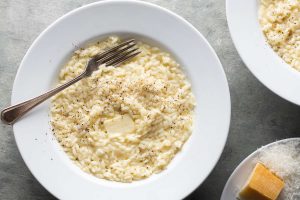
30 interesting facts about Rutabaga
- 👁️ 4617
Rutabaga, a root vegetable that might not make headlines, quietly boasts a rich history and a host of nutritional benefits. Often confused with turnips, rutabagas are larger, denser, and sweeter, making them a versatile ingredient in many dishes. Originating as a cross between a cabbage and a turnip, this humble vegetable is a powerhouse of vitamins and minerals. Known for its distinctive flavor and hearty texture, rutabaga has been a staple in diets where hardy, nutritious vegetables are valued for their ability to thrive in cooler climates. Here are 30 interesting facts about rutabaga that highlight its culinary versatility and health benefits.
- Rutabaga is known scientifically as Brassica napobrassica.
- It originated from Scandinavia or Russia in the early 17th century.
- The name “rutabaga” comes from the Swedish word “rotabagge”, which means “root ram”.
- In parts of the United States, rutabagas are also called “Swedish turnips” or simply “swedes”.
- Rutabagas are a cruciferous vegetable, related to broccoli, cauliflower, and Brussels sprouts.
- They are usually larger and denser than turnips and have a yellow-orange flesh compared to the white flesh of turnips.
- Rutabagas have a sweet-savory flavor that intensifies with cooking.
- They are rich in vitamin C, providing more than 50% of the daily recommended value per 100 grams.
- Rutabagas also contain significant amounts of potassium and magnesium.
- They are a good source of fiber, which helps in digestion and maintaining a healthy gut.
- Historically, rutabagas were commonly used as livestock feed before being recognized as a valuable food source for humans.
- During World War II, rutabagas became a staple in Europe due to food shortages.
- They can be prepared in various ways including roasting, boiling, mashing, and steaming.
- Rutabagas can be eaten raw, sliced thin, and used in salads or coleslaws.
- They are often combined with carrots and potatoes in stews and soups for added sweetness.
- In Finland, rutabagas are used to make a traditional dish called “lanttulaatikko”, a casserole that includes rutabaga, breadcrumbs, and syrup.
- Rutabaga has a low glycemic index, making it suitable for people monitoring their blood sugar levels.
- They can be stored for up to a month in a cool, dry place, making them an excellent winter vegetable.
- Rutabagas are usually waxed before being sold in grocery stores to prevent moisture loss.
- The leaves of the rutabaga plant are edible and can be prepared like other leafy greens.
- They are an excellent source of antioxidants, including beta-carotene, which the body converts into vitamin A.
- Rutabagas are believed to have cancer-fighting properties due to their glucosinolate content.
- They can serve as a low-calorie substitute for potatoes in many recipes due to their similar texture when cooked.
- In Scotland, rutabagas are traditionally carved into lanterns for Halloween instead of pumpkins.
- The vegetable is hearty enough to withstand frost and can be left in the ground through the winter in many climates.
- Rutabaga seeds are sown in late spring or early summer for fall harvest.
- They are a popular ingredient in Nordic and Canadian cuisines.
- Rutabaga is a biennial plant, which means it completes its life cycle over two years.
- In culinary contexts, rutabagas are sometimes referred to as “yellow turnips” due to their color.
- They have been shown to improve metabolic health markers in animal studies.
Rutabagas may not be the most glamorous vegetables on the market, but their robust nutritional profile and culinary flexibility make them a valuable addition to any diet. Their rich history as a staple in times of scarcity underscores their resilience as a crop and their significance in various culinary traditions. As more people discover the benefits and flavors of this root vegetable, it’s likely that rutabagas will continue to feature prominently in kitchens around the world. This collection of facts not only enhances our appreciation for rutabagas but also encourages a deeper exploration into the roots of our food.











